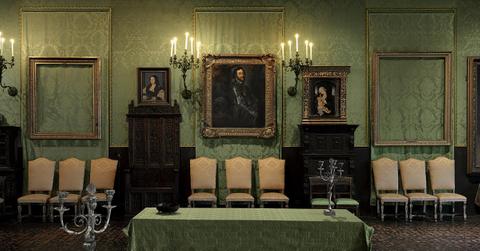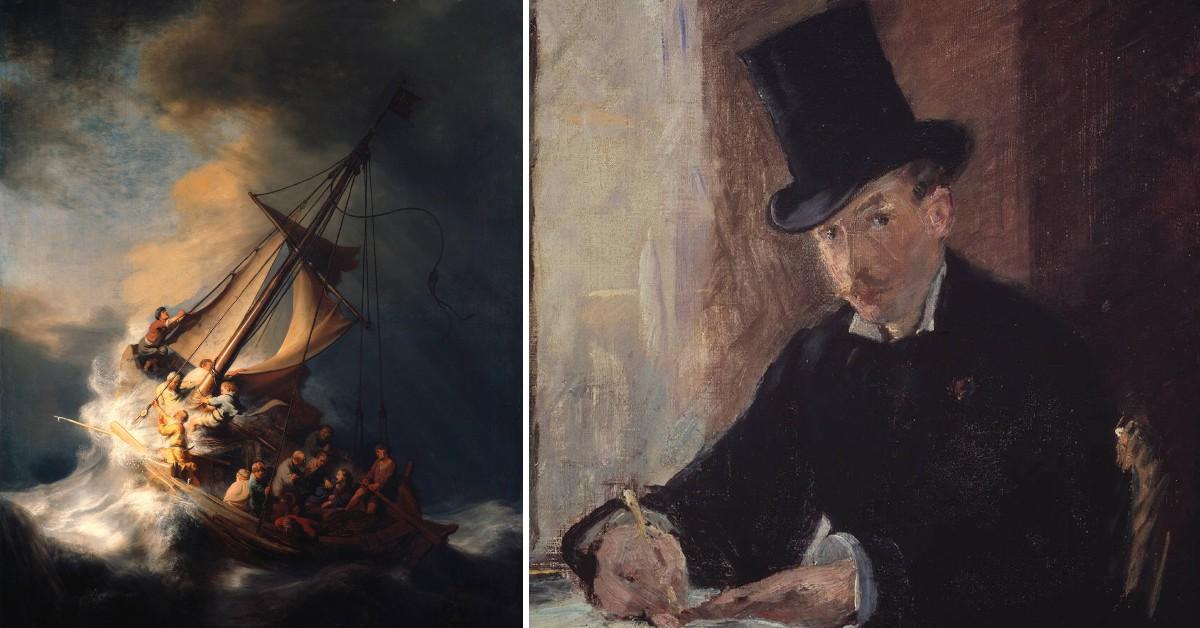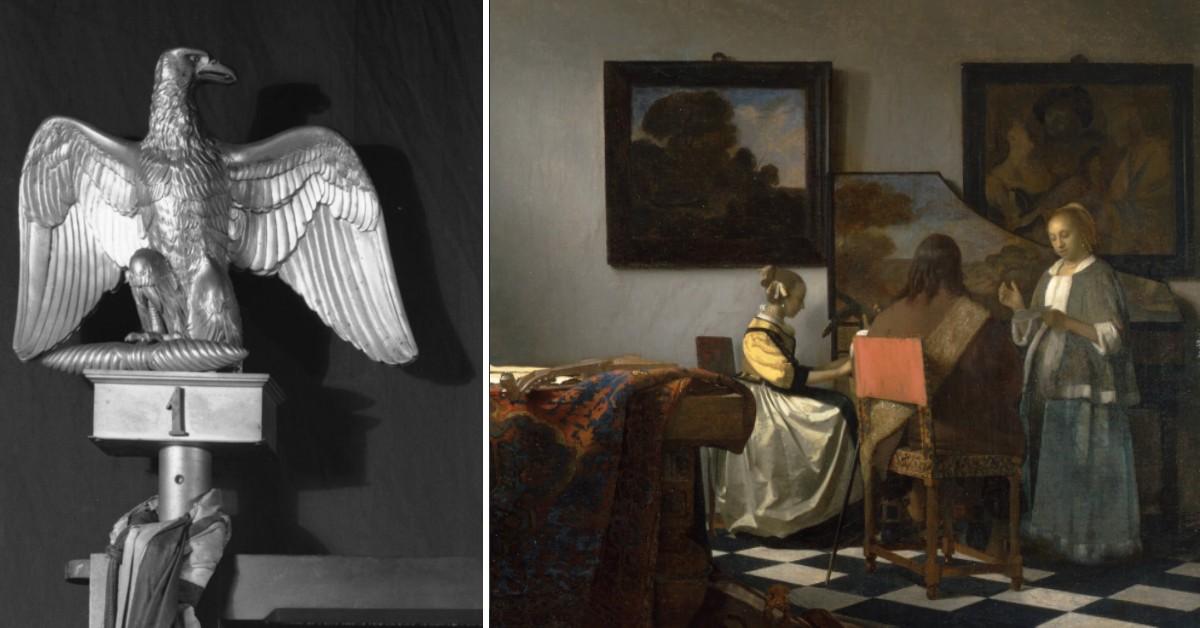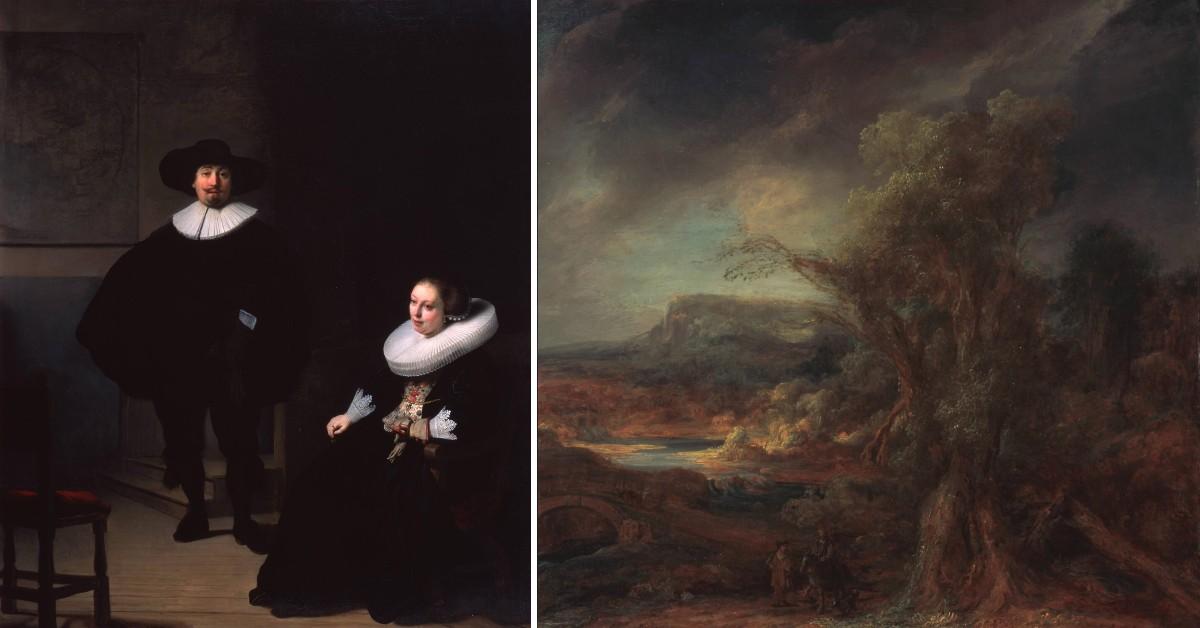Millions of dollars worth of paintings were stolen from a Boston Museum, but what happened to them?

Oct. 29 2021, Published 2:10 p.m. ET
They called him “The Crook.”
He was a notorious organized crime figure, and very well may have been the last living link to the infamous Isabella Stewart Gardner Museum heist, the single largest property theft in the world.
For years, the FBI maintained Robert Gentile, a made member of the Philadelphia mob with a rap sheet spanning back to the 1950s, knew a thing or two about the 13 pieces of art valued at an estimated $500 million stolen from the Gardner Museum in Boston.
Gentile, who died of a stroke on Sept. 17 at the age of 85, said on multiple occasions he had no knowledge of the Gardner Museum heist or the whereabouts of the missing pieces.
“I had nothing to do with the paintings,” Gentile told The Associated Press after he got out of prison in 2019.
“It’s a big joke.”
But the cops seemed certain “The Crook” was more than just a comedian.
On March 18, 1990, while scores of locals slept off their St. Patrick’s Day shenanigans, two thieves dressed as cops broke into the Isabella Stewart Gardner Museum, tied up the guards at gunpoint, and pulled off one hell of a heist in just 81 minutes.
The best-known works of art were taken from the Dutch Room.
The thieves cut “Christ in the Storm on the Sea of Galilee,” the only known seascape painting from Rembrandt, and “A Lady and Gentleman in Black” from their frames, and removed Flinck’s “Landscape with an Obelisk” and “The Concert,” by Johannes Vermeer from their frames, and lifted an ancient Chinese bronze Gu, and snagged a small self-portrait etching by Rembrandt from the side of a chest, according to the Gardner Museum’s website.
For decades, baffled experts and investigators have stared at the museum’s blank walls and empty frames without a clue.
A CITY IN TURMOIL
The “City on a Hill” was a city in peril in the 1990s. Violent crime and murder statistics from this time were spiking at staggering rates, according to research conducted by The Brennan Center For Justice. There seemed to be no end to the list of noteworthy ne'er-do-wells who called the Hub home.
James “Whitey” Bulger and Steve “The Riffleman” Flemmi functioned as a two-man mob out of Southie with their infamous FBI connection.
La Cosa Nostra laid claim over The Channel club and clipped the owner, who was found buried in a construction site 25 years later. A man called “God” declared himself the crack cocaine king.
An unsolved horror story about half of a Swedish au pair was found in a dumpster put the nightlife scene on high alert, and racial tensions flared when Presidential candidate George H. W. Bush mopped the floor with his opponent, Massachusetts Governor Michael Dukakis via the Willie Horton scandal.
Sean Ellis was framed and convicted for the murder of a Boston Police Detective. A man named Charles Stuart leapt off the Tobin Bridge after starting a bogus manhunt for “a black guy who murdered his pregnant wife.” His own brother finally told police Stewart killed her for the insurance money, but not before the Boston police put a tour-de-force clampdown on every black block in the city.

Some of the art stolen in the Isabella Stewart Fardner Museum heist
By the time construction began on the Big Dig, the most expensive highway project in U.S. history, the story of a high-priced art heist with no bloodshed was all but buried in the garden variety of high-profile criminal activity in Boston.
“It was the first time that art was stolen at gunpoint in history,” Anthony Amore, who was head of security at the Gardner Museum for over six years, told Artnet News when talking about the “Stealing Rembrandts”, a non-fiction book he had a hand in writing.
Some 40 years earlier, Boston was home to The Brink’s Job, the first armored car robbery. Why not keep the “first-ever” tradition going?
A guy like “The Crook” would be happy as a clam in its seedy, chaotic underworld.
Robert “Bobby” Guarente, a Boston mafia goon who befriended Gentile, wasn’t a suspect in the heist until six years after his death, when his widow allegedly told the FBI in 2010 that he handed over several of the missing masterpieces to “The Crook, according to WBUR.”
Officials knew Guarente’s name was associated with Wiseguys who knew the museum’s poor security made it an easy target. He’d been busted for bank robbery in the late 1960’s, and walked out of the joint in 1980. Surely, he might want to get back into the action sooner or later.
“Guarente was the hub of so many people. He is an interesting guy because he is not well known. But he knows everybody," an unnamed source told The Hartford Courant.
"Guarente was Gentile's connection with Boston. Until then, Gentile was his own man. He did his own thing, his own way. Guarente was a stone-cold criminal and robber. He told me he robbed 30 banks, and toward the end, he was selling huge amounts of drugs."
His name was never far from Gentile’s, and both their names were on a roster of connected Wiseguys and con artists, all of whom were dead ends.
AN ART THIEF'S LIST
“The Crook’s” cousin, Sebastian “Sammy” Mozzicato, a one-time-Wiseguy-turned-FBI informant, told The Hartford Courant he recorded Gentile agreeing to sell the paintings for $500,000 each before backing out of the deal.
Mozzicato also claimed “The Crook” used to keep the 10-inch-tall bronze Napoleonic finial eagle on a mantle in his auto body shop and used car lot shop on Route 5 in South Windsor, Connecticut.
Sammy allegedly told federal agents Gentile acted like the guy who knew all about the lifted loot. There were rumors of stolen paintings stored in an alleged-crash pad condo for Boston-area Wiseguys affiliated with the Philadelphia mafia in Waltham, Massachusetts in the late 1990’s. Mozzicato said Gentile gave him photos of five of the stolen paintings in hopes of finding an interested buyer. A few days later, it was alleged at least some of the artwork was taken to a mobster's farmhouse north of Portland, Maine.
After that, it was anybody’s guess.
Gentile was arrested on Feb. 10, 2012, after the Feds kicked down the door at his Manchester, New Hampshire home, and seized 200 Percocet, two .38 caliber Smith & Wesson revolvers, a .22 caliber North American Arms revolver, a .22 caliber derringer, a 12-gauge pistol-grip shotgun, numerous rounds of ammunition, boxes of 12-gauge shotgun shells, five handgun silencers and approximately $22,000, according to the U.S. Attorney’s Office for Connecticut.

Some of the art stolen during the Isabella Stewart Fardner Museum heist
Authorities said they found a clipping from the Boston Herald about the heist and handwritten list of the loot lifted from the Gardner Museum, complete with annotations of their estimated values, too.
The FBI claimed Gentile said he had access to two of the paintings and that he could sell them for $500,000 each during the sting operation.
Massachusetts art thief Florian "Al" Monday, who lifted a Rembrandt from the Worcester Art Museum in 1972, said he wrote the list and the values were his estimates of what the pieces were worth on the black market. Monday said he gave the list to a known forger, thief and hairstylist from Milford, Massachusetts, an interview with The Courant.
Connecticut’s former-Assistant U.S. Attorney John Durham said Gentile allegedly told an undercover FBI agent that he had access to two of the stolen paintings and could negotiate the sale of each for $500,000, and claimed to have evidence that Gentile told three fellow inmates at the Wyatt Detention Facility in Rhode Island, who to call and what codename to use in the event that they might be interested, according to the Associated Press.
Durham even said Gentile made the offer after he was released from prison in April 2014, when he finished a sentence in a weapons and prescription drug case.
The authorities always seemed to be closing in — and coming up short.
“We’ve always believed that Robert Gentile had some information that could have helped us, but chose not to reveal it,” Amore told Artnet News. “We believe that he had contact with at least two of the works.”
‘A MERRY HUNT’
“The Crook” held court in Hartford and Philly when he wasn’t dirtying his boots along the muddy banks of The River Charles.
His turf is where federal agents said they lost the scent of the artwork. Gentile was implicated but never cuffed.
“Our last confirmed sighting was in the Philadelphia area,” FBI special agent Geoff Kelly told The Fenway/Kenmore Patch.com in 2013.
“The artwork was seen in both Connecticut and Philadelphia. If we said we believe the art was in Connecticut and Philadelphia and was offered for sale, the next logical question would be, 'Do you know who did it?' So we were trying to choose between either saying upfront, this is everything we can tell you right now, or holding back information and obviously that would have been the first question. Contextually, we felt it was more effective if we released everything we can while preserving the integrity of the investigation.”
“The FBI believes with a high degree of confidence in the years after the theft the art was transported to Connecticut and the Philadelphia region and some of the art was taken to Philly where it was offered for sale by those responsible for the theft. With that confidence, we have identified the thieves, who are members of a criminal organization with a base in the mid-Atlantic states and New England,” Richard Deslauriers, the special agent in charge of the Boston office of the FBI said in a 2013 statement.
The FBI allegedly recruited other cousins, friends and associates in hopes of setting up a failed sting operation in 2014 and 2015.

Some of the art stolen in the Isabella Stewart Fardner Museum heist
Defense lawyer A. Ryan McGuigan said in a court document that “The Crook’s” con was so slick, he was trolling the FBI, running "a scam for all it was worth in hopes of getting some quick cash" and "proceeded to lead his merry band of informers and double agents on a merry hunt for nonexistent paintings."
In August 2016, George Burke, a former Norfolk County District Attorney, told Metro Boston he had a client who recognized the “unauthorized visitor” seen in the grainy never-before-seen security footage from 24-hours prior to the heist, which also provided a shot of a vehicle parked at the rear entrance matching the description of the one seen outside the museum moments before the theft.
Burke said he informed then-Massachusetts U.S. Attorney Carmen Ortiz, his client recognized the mysterious visitor, but the man was scared for his life and wished to remain anonymous.
Burke claimed his client knew the person on film from working in the antiques trade, and the person in question had had contact with Myles Connor, a Milton, Massachusetts career criminal long suspected for having a hand in the heist.
Connor, who helped make the Netflix documentary, “This Is a Robbery: The World's Biggest Art Heist,” facilitated the reunion between the Museum of Fine Art and the Rembrandt Florian walked off with in 1975. He was yet another well-connected con artist who couldn’t be linked to lost artwork.
“In reality,” Connor told The Harvard Crimson, “there’s no museum in the country that couldn’t be taken down.”
In the end, “The Crook” took what he might have known to the grave, and the big joke is still on those out for justice.
The Gardner Museum, the FBI and the U.S. Attorney's office still seek viable leads, and are offering a $10 million dollar reward for information leading directly to the safe return of the stolen masterpieces.
Experts estimate “The Concert,” one of 34 known pieces by Johannes Vermeer, is the most valuable stolen piece. There is also a separate reward of $100,000 is being offered for the return of the Napoleonic eagle finial.
Anyone with information about the stolen artworks should contact Director of Security Anthony Amore at (617) 278-5114 or reward@gardnermuseum.org.
Become a Front Page Detective
Sign up to receive breaking
Front Page Detectives
news and exclusive investigations.
